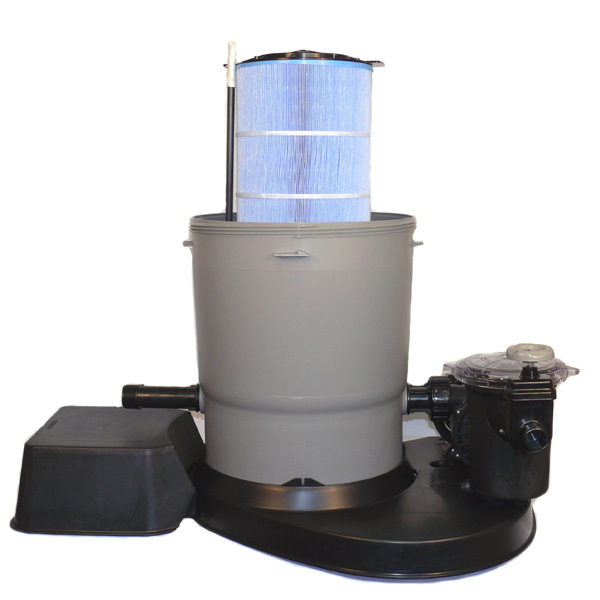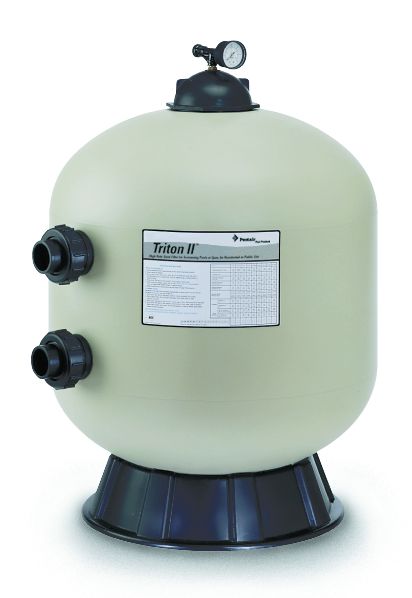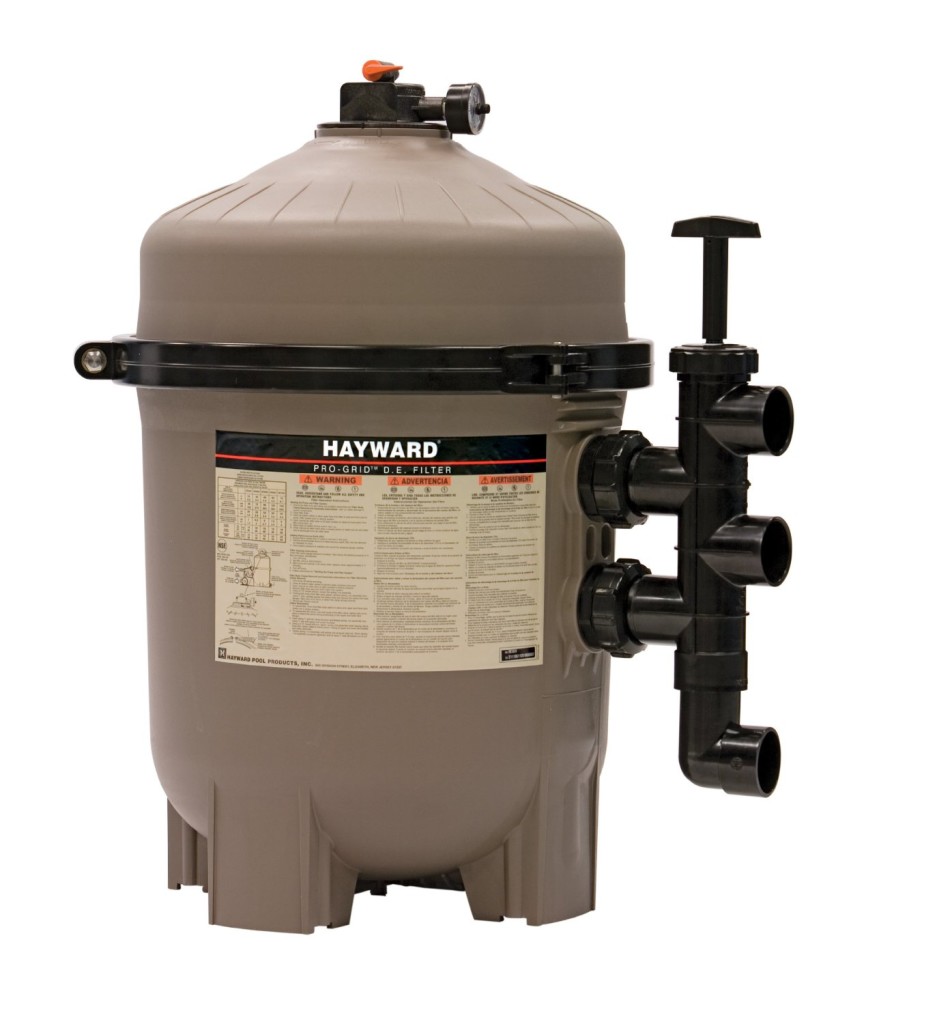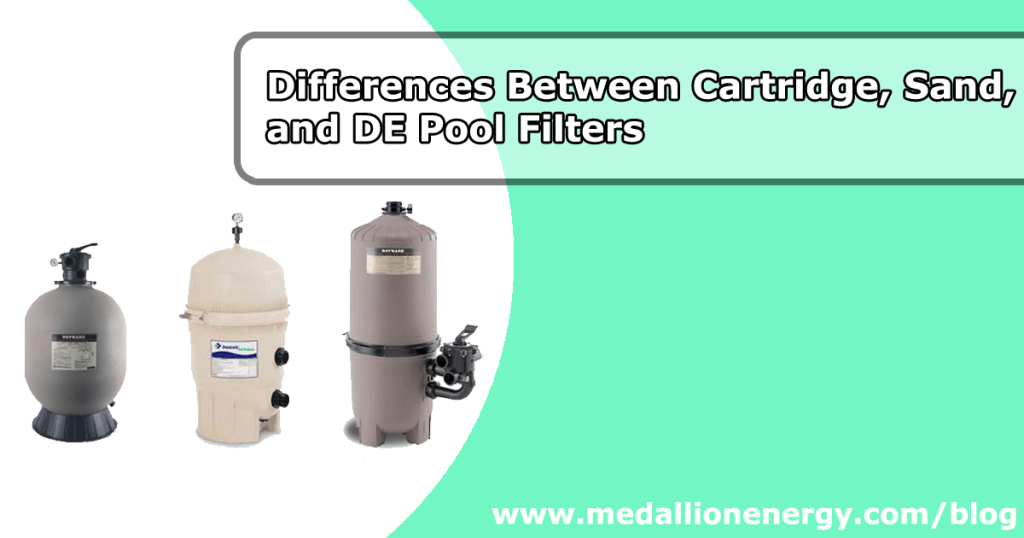Pool filters are the go-to solution for keeping pool water clean and clear. Without them, swimming in pools would be a less than enjoyable experience to say the least. Currently there are three major types of pool filters commonly used in pool setups – Cartridge, Sand, and Diatomaceous Earth (D.E.). Each filter type comes with its own set of benefits and advantages, so declaring one superior to other just isn’t reasonable. All three filter types will do an exceptional job of keeping your pool clean – which one you choose to use is entirely dependent on your personal preference. Here are the main differences between the three.
Cartridge Filters


 Cartridge filters are one of the easiest pool filters to manage. They’re capable of capturing particles as small as 10 microns. As a point of reference, the typical width of a strand of human hair sits between 40-50 microns. That being said, a cartridge filter takes care of mostly all visible debris and them some. Additionally, they’re particularly easy to clean requiring only a simple removal and rinsing (other filters require backwashing), which contributes to the eco-friendliness of the pool, using only a small amount of water.
Cartridge filters are one of the easiest pool filters to manage. They’re capable of capturing particles as small as 10 microns. As a point of reference, the typical width of a strand of human hair sits between 40-50 microns. That being said, a cartridge filter takes care of mostly all visible debris and them some. Additionally, they’re particularly easy to clean requiring only a simple removal and rinsing (other filters require backwashing), which contributes to the eco-friendliness of the pool, using only a small amount of water.
Sand Filters


 Initially, sand filters offer a capture range down to 20 to 40 microns, but over regular use become increasingly effective. Typically, these filters are fairly low maintenance aside from normal backwashes, lasting as long as 5 years before a sand replacement is required. Sand filters are ideal for those who prefer a minimal amount of maintenance attention.
Initially, sand filters offer a capture range down to 20 to 40 microns, but over regular use become increasingly effective. Typically, these filters are fairly low maintenance aside from normal backwashes, lasting as long as 5 years before a sand replacement is required. Sand filters are ideal for those who prefer a minimal amount of maintenance attention.
Diatomaceous Earth (D.E.) Filter


 If you crave a level of pool water cleanliness and clarity that nearly mimics perfection, this is the filter for you. D.E. Filters are comprised of diatoms, which are derived from fossils. Diatoms are capable of filtering particles as little as 3-5 microns. That’s so small that it’s practically invisible to the human eye. Needless to say, a D.E filter will do a more than acceptable job of keeping your pool debris free. However, as with sand filters, D.E filters require a backwash whenever system pressure reads 8-10 psi over its clean reading. Additionally, it’s important to note that because of the materials used, D.E filters are more susceptible to damage than the other filter types, so you’ll want to check for any tears or cosmetic imperfections throughout use.
If you crave a level of pool water cleanliness and clarity that nearly mimics perfection, this is the filter for you. D.E. Filters are comprised of diatoms, which are derived from fossils. Diatoms are capable of filtering particles as little as 3-5 microns. That’s so small that it’s practically invisible to the human eye. Needless to say, a D.E filter will do a more than acceptable job of keeping your pool debris free. However, as with sand filters, D.E filters require a backwash whenever system pressure reads 8-10 psi over its clean reading. Additionally, it’s important to note that because of the materials used, D.E filters are more susceptible to damage than the other filter types, so you’ll want to check for any tears or cosmetic imperfections throughout use.


